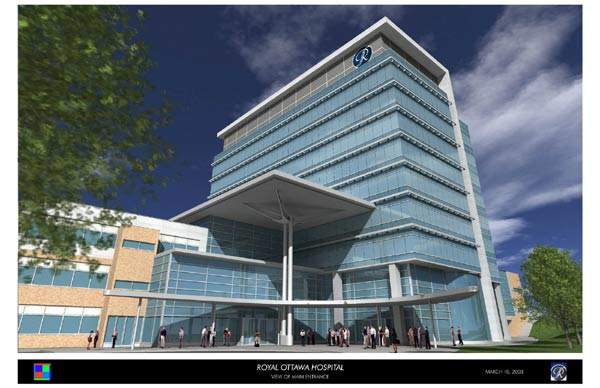On 9 September 2003 the Conservative government of the Canadian province of Ottawa finally approved the reconstruction of the Royal Ottawa Hospital (ROH).
The ROH was built in 1910 to combat the “White Plague” or Tuberculosis. The Hospital was built at a cost of $50,000 on land the City of Ottawa expropriated from the Township of Nepean.
The winning consortium, the Healthcare Infrastructure Company of Canada met the guarantee that the ROH facilities be designed and built to meet explicit specifications set out by the Royal Ottawa Health Care Group. The new facility must be designed, built, financed, owned, operated, property managed and maintained in a timely and cost-effective manner as compared to a traditional re-development model with the public sector.
When finally completed with a floor space of 400,000ft², the ROH will be a 188-bed hospital built for $100 million. An accompanying 96-bed long-term care facility will also be built, through public funds, at a cost of about $10 million, for a total of 284 beds. Designed with sunlit corridors, cafés and gardens, the new complex is intended to have a therapeutic effect on patients.
The project has been hailed as a ground-breaking event that would help change the public image of mental health and bring it into the mainstream of health care in Ontario and, perhaps, throughout Canada.
“This will be the most modern facility of its kind in Canada, if not North America, (and) absolutely the most significant thing that would have happened to the ROH over the last century,” said hospital president George Langill. “There is this image of the old asylum, the cuckoo’s nest type of image, and this building will help destigmatise mental health.”
Backers say governments just don’t have the hundreds of millions of dollars required for capital projects in health care. They point out that the bill for hospital infrastructure in Ontario is about $7 billion, money that just isn’t available, and the best way to build new hospitals is to open the door to private sector investment, the way Britain has done.
Not everyone agrees. News soon emerged that the leader of the opposition – Howard Hampton had filed an affidavit with Ontario’s “Integrity Commissioner” seeking a public inquiry into the relationship between the Conservative Government and the bidders on its new private hospital construction projects (known as P3s). The whole furious debate reflected general concerns in Canada over private involvement in public healthcare.
Opponents say Ontario’s public-private partnerships are money down the drain. Medicare restructuring commissioner Roy Romanow panned privately-owned health institutions in his report and Richard Plain, a University of Alberta health economist, says a partnership in which the private sector builds a hospital and leases it back will end up costing taxpayers more.
When finally completed the Royal Ottawa Hospital will provide tertiary regional long-term mental health services for the residents of Champlain District and North Lanark. The delivery of all health care programs will remain the responsibility of the Administration and Board of the Royal Ottawa Health Care group and be funded through the public health care system.










